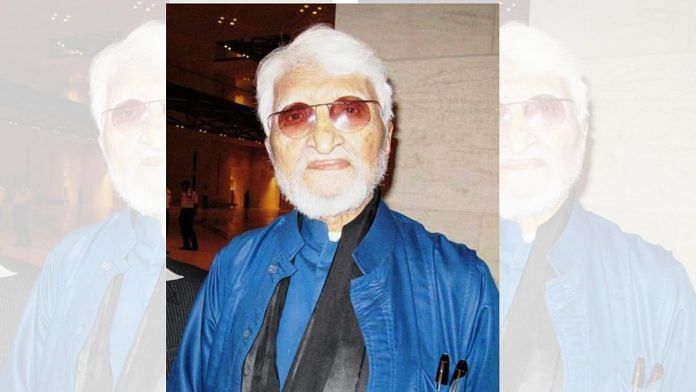New Delhi: In 2006, the Indian art world was embroiled in a debate over the works of celebrated artist Maqbool Fida Husain, whose bold depictions of Hindu deities sparked widespread outrage among sections of society. These depictions, while artistically acclaimed globally, led to a series of criminal cases filed against Husain across the country, alleging obscenity and hurt to religious sentiments. However, the Delhi High Court, in a landmark judgement, put an end to the criminal proceedings against Husain.
Once referred to as the “Picasso of India” by Forbes magazine, M.F. Husain created artworks that explored cultural and mythological themes in a way that some deemed provocative. His controversial paintings, particularly those of Hindu goddesses in the nude, invited criticism for allegedly violating traditional sensibilities and religious sentiments.
Over the years, these artworks became a lightning rod for debates on artistic freedom versus community values. Around the same time, multiple cases were brought against him in several states under sections 153A, 295A, and 292 of the Indian Penal Code (promoting enmity between communities; insulting religious sentiments; and participating in or promoting businesses that sell obscene objects, respectively).
Faced with public outrage and threats, Husain chose self-imposed exile and lived overseas until his death in 2011.
In landmark cases, such as Raj Saini vs M.F. Husain and the Bharat Mata painting controversy, the Delhi High Court dismissed charges against Husain, citing the absence of malicious intent. The court emphasised that his artwork should be understood within the broader context of creative freedom and cultural expression.
It also noted that nudity in art does not inherently constitute obscenity, referencing India’s ancient temple art as an example of its rich artistic heritage.
In 2011, the Supreme Court consolidated appeals from lower courts and upheld these decisions, affirming that Husain’s works were protected under Article 19(1)(a) of the Constitution, which guarantees freedom of speech and expression. The court underscored the importance of a pluralistic and tolerant perspective towards art and ruled that unless there was deliberate intent to incite hatred or disrupt public order, such cases lacked legal merit.
Also Read: Delhi court orders seizure of ‘offensive’ MF Husain paintings, igniting debate on artistic freedom
‘A painter has his own perspective’
In May 2008, the Delhi HC intervened, dismissing the criminal cases against M.F. Husain.
In a landmark decision, Justice Sanjay Kishan Kaul highlighted the value of artistic expression and the right to freedom of speech and expression guaranteed by Article 19(1)(a) of the Indian Constitution.
The court ruled that Husain’s artworks, while unconventional and bold, did not intend to incite hatred or hurt religious sentiments. Justice Kaul noted, “A painter has his own perspective of looking at things. Painting, as a form of art, is also an expression of an artist. Even if it depicts nudity, it cannot be assumed to be obscene.”
The court ruled that the allegations against Husain were based on subjective interpretations rather than the artist’s intention. It recognised the necessity of defending artists from false and motivated litigation that could limit their creativity.
SC upholds verdict
The Delhi HC’s decision was a landmark victory for the arts community, upholding constitutional protections. This verdict was eventually affirmed by the Supreme Court in 2011, essentially ending any criminal proceedings against Husain.
The top court not only affirmed the Delhi HC’s views, but also weighed in on the debate over free expression. It cautioned against using religious sensitivities to limit liberties, arguing that art should be examined within a larger cultural and societal framework.
Husain’s legal troubles underscored the difficulties artists confront when matching their work with sociopolitical situations. Though he died in self-exile, the judgments sustained his artistic legacy by supporting principles such as independence, creativity, and tolerance, as well as sparking debates about the limitations of art and resilience in artistic expression.
Lavanya Yadav is an intern with ThePrint
(Edited by Radifah Kabir)
Also Read: MF Husain, the bold & prolific artist who started his journey painting movie billboards







Would the Delhi HC and the SC would have been so liberal and open-hearted if the outrage was from Muslims and not Hindus?
Am sure even the Delhi HC and SC judges are afraid of stupid fatwas and the bestial and primitive concept of “sar tan se juda”.
All such liberalism and pandering to the Leftist ideals of progressiveness happens in cases pertaining to Hindus, Sikhs, Christians, etc.
When it’s time to apply the same principles on Islam, the Milords cower and shudder.